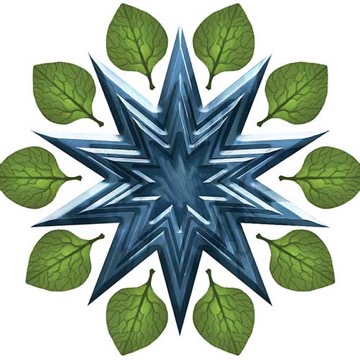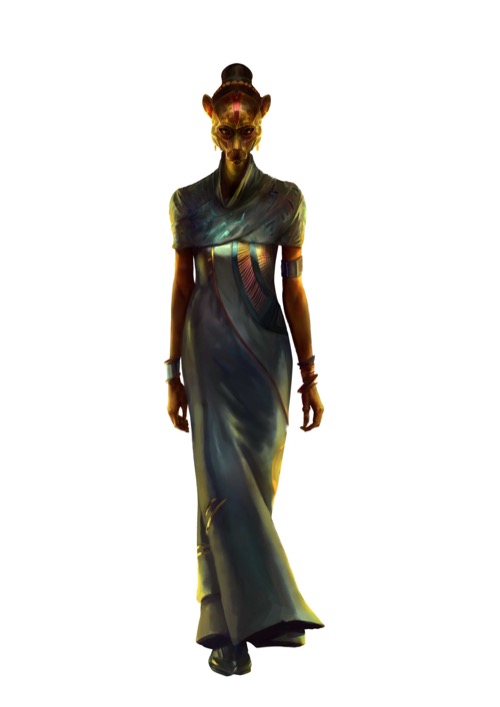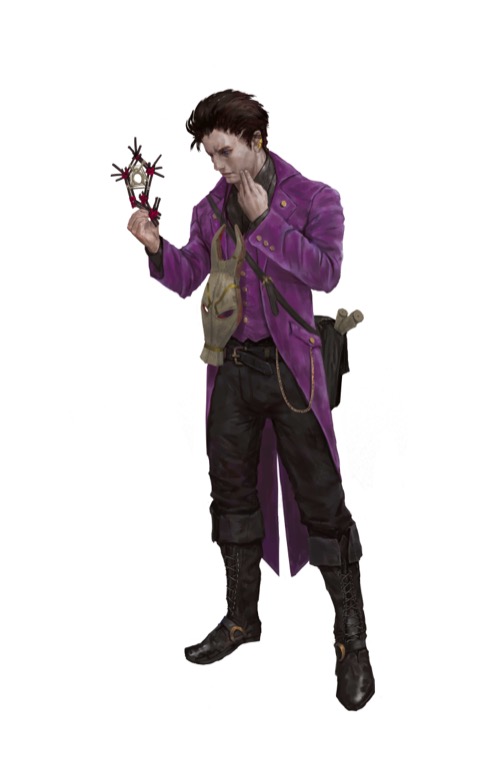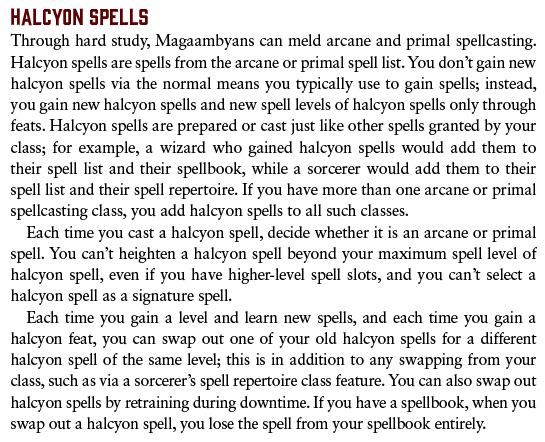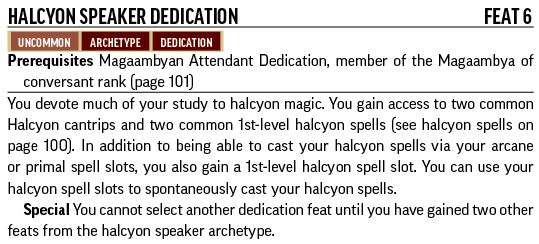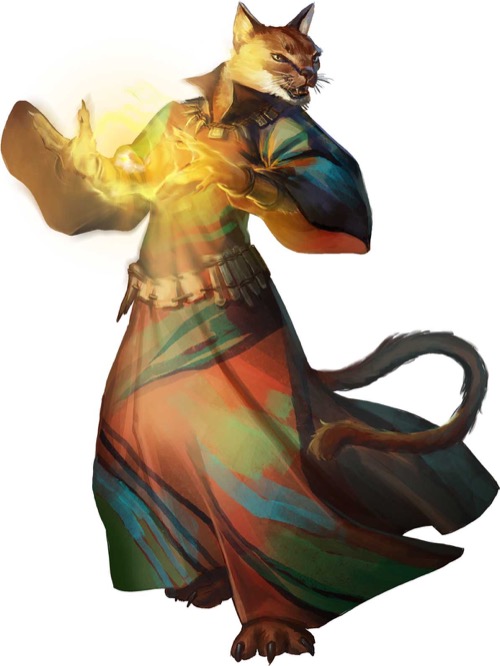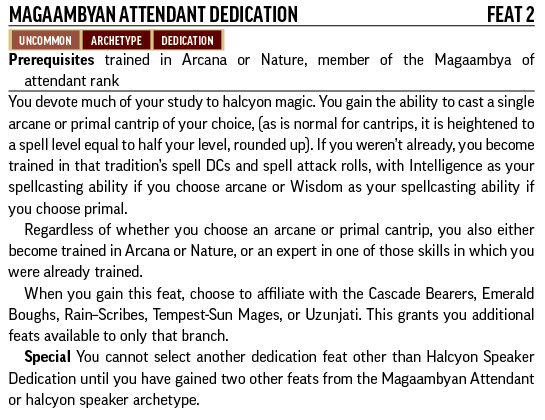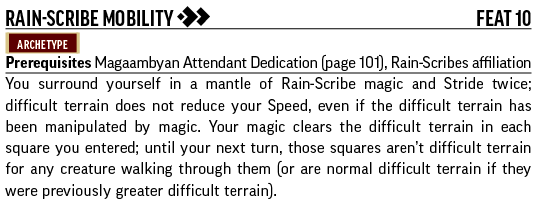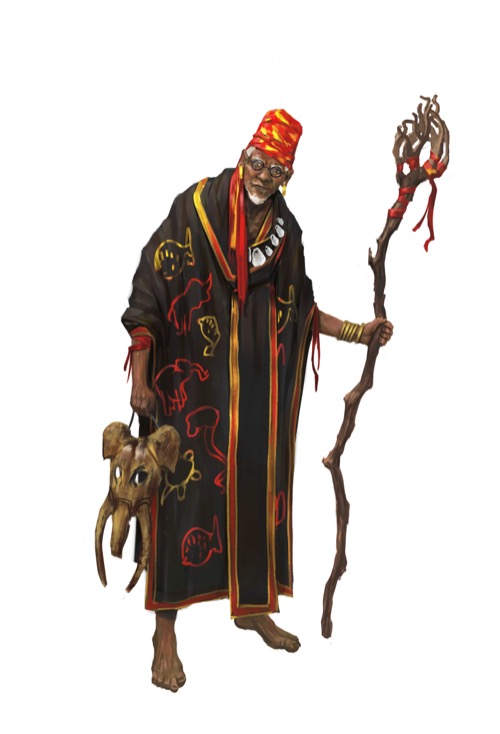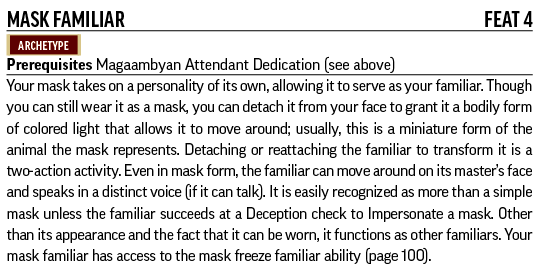When considering the best organizations to showcase in the upcoming Lost Omens Character Guide, we asked ourselves who the most iconic figures in our setting were—or should be. Case in point: the Magaambya. Founded by the legendary Old Mage Jatembe, credited with bringing back magic as the Inner Sea region knows it after the destruction of Earthfall, the Magaambya is the oldest magic school in the Inner Sea and possibly on Golarion. The parallel in prestige to real world institutions like Oxford and Cambridge, the Magaambya surely stood as one of the premier organizations in the Age of Lost Omens campaign setting.
Except, like many things in the Mwangi Expanse, that was truer in theory than in reality. While factions such as the Pathfinder Society would travel into Garund quite often, it seemed that the Magaambya was skimping on its travel budget, and members of the arcane college weren’t often seen in official Paizo products. One of our goals in the Lost Omens Character Guide was to firmly define the current presence and goals of the Magaambya. In addition to their heavy presence in the Mwangi Expanse, the Magaambya has begun setting up satellite colleges to the north—after the explosion (many times literal) of arcane events and anomalies that have occurred in Avistan, from the closure of the Worldwound to the appearance of New Thassilon to the destruction caused by the Whispering Tyrant, the scholars of the south have decided it’s about time they go see what on earth is happening up there!
Joining the Magaambya is simply a matter of finding a teacher to sponsor you into the school, but you don’t count as a full-fledged member just from the get-go. Initiates first have to complete a Perquisite: a period of public service. Unlike the teachings of Nethys, the Magaambya doesn’t believe that magic is worth studying just for the sake of being magic. It’s what the magician intends to do with their power that’s important, and the Magaambya believes that those who can cast magic should use it to aid other people. The Perquisite is thus a means to earn the right to study at the Magaambya, but also the Magaambya’s most important lesson. Public service and a willing sponsor are still much easier entrance requirements than other prestigious colleges, who can often discriminate on the grounds of class, ancestry, or wealth. The Magaambya has a startling array of peoples among its students, including many ancestries that have unsavory reputations in other places: anadi, catfolk, gnolls, and iruxi can be found openly studying on the grounds, and even prospectives from Usaro, Mzali, or the Sargavan people—as many Mwangi call the colonists who recently ruled Vidrian—can find a warm welcome, if their intentions are good.
The Magaambya is founded in the teachings of Old Mage Jatembe—most critically, that all magic is magic, regardless of the source. Distinctions such as divine, primal, arcane, and occult are all simply distractions from this truth. Of course, this distinction is easier said than practiced, as the Magaambya well knows. The Magaambya’s signature spellcasting is known as “halcyon magic,” a tradition that combines both arcane and primal magic when casting spells (seen in action in this recent piece of fiction by Tim Pratt and described in the Lost Omens Character Guide). Characters who take the halcyon speaker archetype represent those mages who have mastered halcyon magic and, at higher levels, can even learn to cast multiple halcyon spells at once.
Halcyon magic has been practiced by the Magaambya for a long time, but the researchers and staff at the university aren’t content to rest on their laurels. The Magaambya has plenty of teachers to pass down their current traditions, but also continue researching ways that other traditions of magic might be combined: arcane magic pulsing with the power of the divine, or occult secrets locked away in ancient, primal monuments.
Characters that complete their Perquisite gain the rank of Attendant, which allows them to begin advancement in Magaambyan fields of learning such as halcyon magic. Attendants are also expected to choose what branch of the Magaambya—specialized faculties within the school—the student wishes to pursue. Magaambyan attendants have five branches to choose from, representing their commitment to one of the school’s five specialized faculties. Pursuing work within that branch offers on-the-job training that can grant a student unique abilities. A Cascade Bearer, who focuses on advancing magical theory, can use her extensive studies to warp her magic on the fly, such as extending great effort to apply a minor metamagic she has not mastered to a spell. Tempest-Sun Mages, who exist to protect the Magaambya and its allies, can channel some of their offensive magic into a magical barrier to defend themselves. Characters that join with one of the five branches can represent their focus via the Magaambyan attendant archetype.
In addition, Attendants gain the right to create a Magaambyan mask and have it recognized by the other faculty and students. These masks can be unnerving and difficult to explain to outsiders—while they begin as simple wood, continual use is meant to leave an “imprint” of the wearer’s true face, etched into the mask by the student’s soul and magical power. The mask serves as a focus and guide for the Attendant’s magic, as well as a connection between the Attendant’s body and spiritual self. Masks are not considered mandatory, however, and some people find these masks too unsettling to use… especially the ones that move and speak on their own!
As you can see, the Magaambya truly embodies a dedication to the gathering of knowledge, and greater yet, a dedication to change the world for the better with said knowledge. Members of the Magaambya travel all over the world to both build on this knowledge and apply their skills, magical or otherwise, to improving the world wherever they go. If this sounds like something you’d be interested in playing, make sure to check out the Lost Omens Character Guide when it releases on October 16th and read Andrew Mullen’s great work on the Magaambya. If you’re interested in traveling the world, but are maybe less magically inclined or you just prefer to explore for the thrill of seeing the world, you should tune in next week for our blog focusing on the famous (or infamous) Pathfinder Society!
Eleanor Ferron
Developer
He's A Magic Man, She's A Magic Man!
Friday, October 4, 2019




